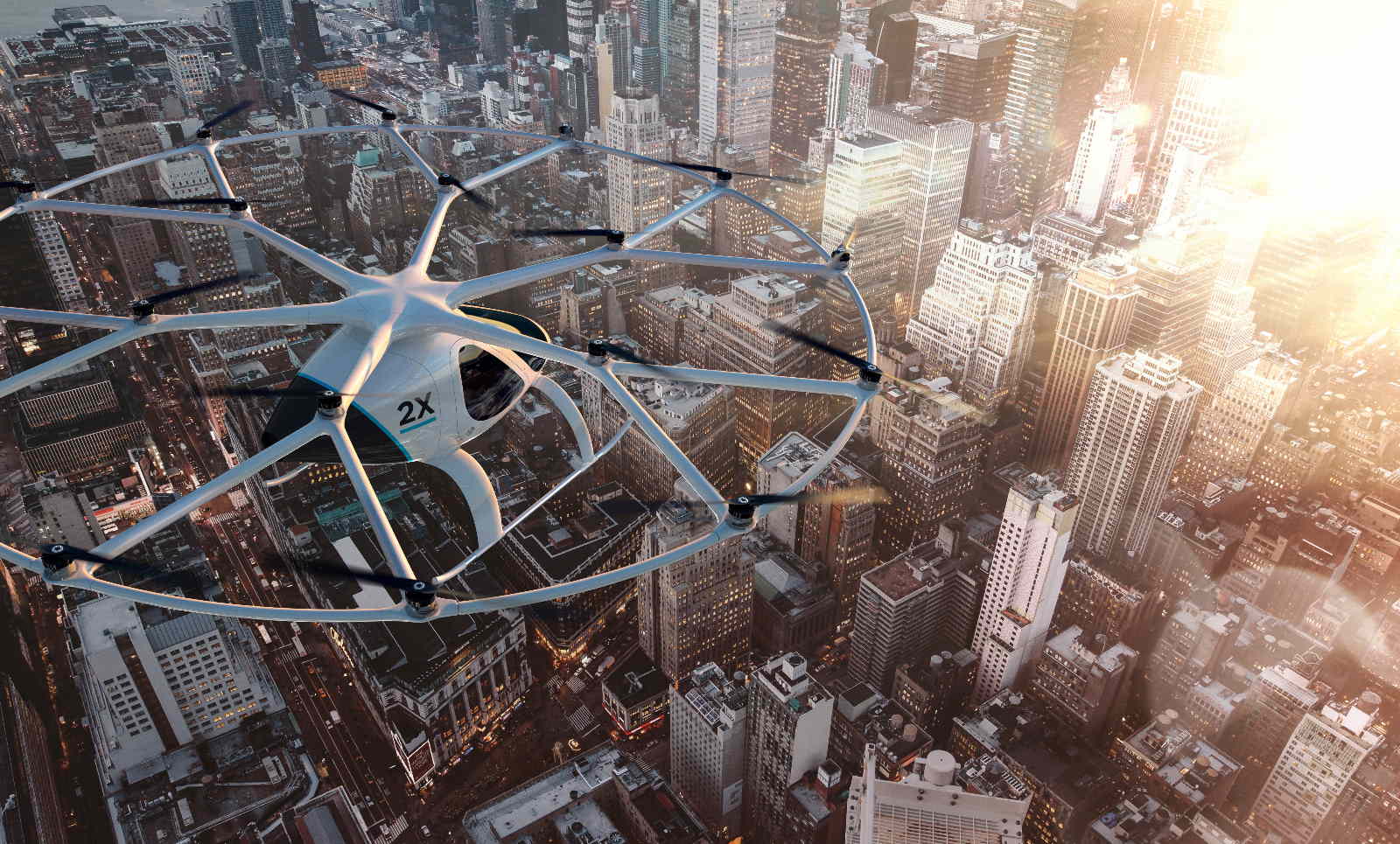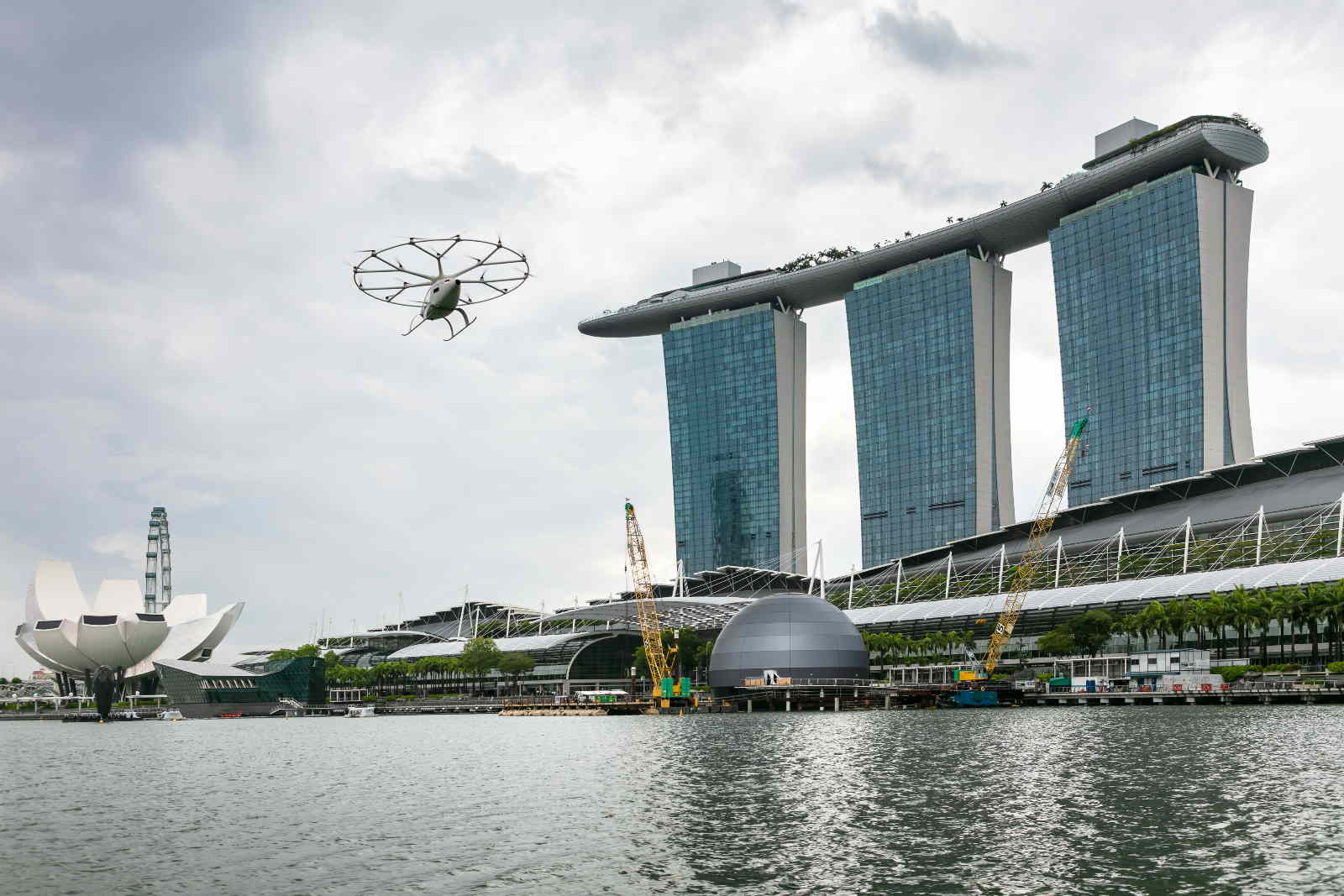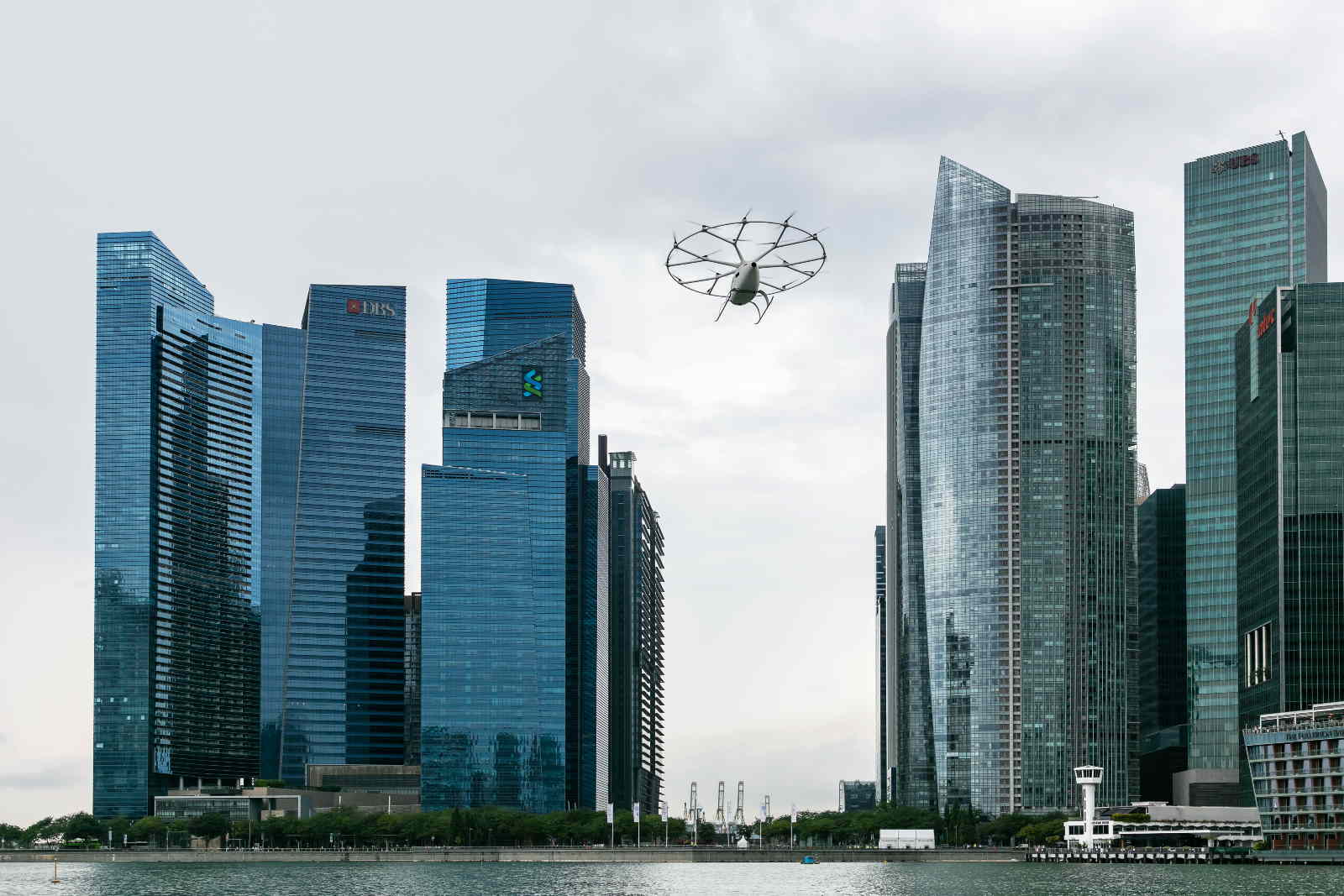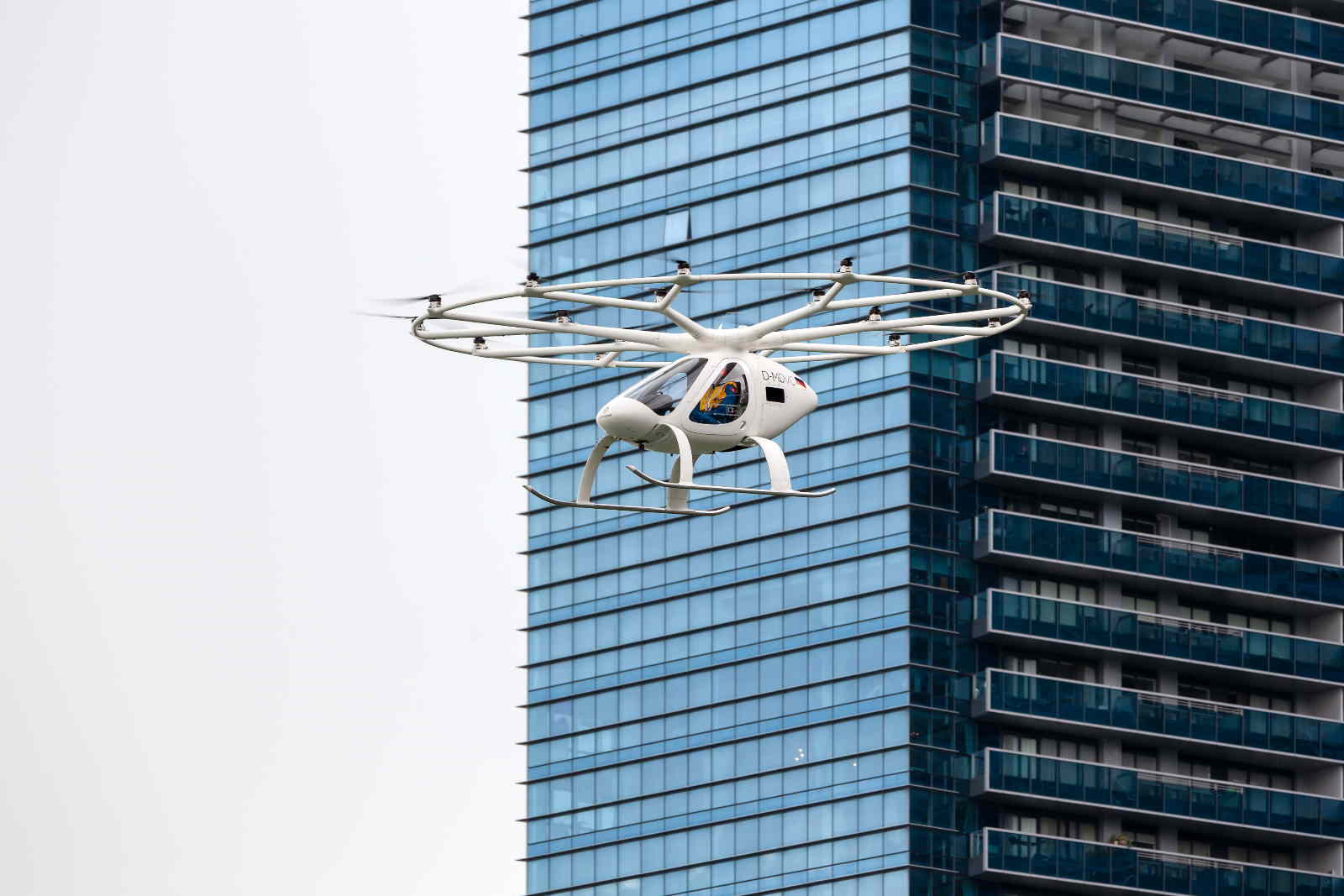Volocopter’s successful test flight last year showed the unlimited possibilities of air travel. We discussed the brand’s foundation, the issues it faces and its future plans for creating urban air travel systems.
Founded in 2011, Volocopter has developed the world’s first all-electric autonomous multi-rotor aircraft using drone technology and, using this, aims to provide point-to-point in-air electric mobility services in urban areas. Today, the company is gaining valuable experience in VTOL (vertical takeoff and landing) technology, and after its successful public manned flight in the Gulf of Singapore last year has begun laying the groundwork for its future commercialization.

We sat down with Mr Jan-Hendrik Boelens, the CTO of Volocopter, to talk about the future of air travel and how the brand is taking future mobility to the next level.
What was the inspiration to start developing air taxis?
Our co-founder, Stephan Wolf, first came into contact with drones in 2010 when he bought one for his son. He was amazed at how easy it was to fly this technology and got curious – if it was scaled up to a size and remained as easy and stable, that humans could fly with it. After a few months of calculations, he was convinced that it was possible and found partners to help make the first proof of concept. Once proven that the technology was indeed feasible, the Volocopter founders quickly came up with hundreds of possible applications for this new kind of aircraft – adding a completely new means of mobility to cities and bringing Urban Air Mobility to life, is what we continue to focus on.

Jan-Hendrik Boelens, CTO of Volocopter
The successful test flight in Singapore last year has once again shown the unlimited possibilities of future air travel. As a pioneer in the field of global air travel, what is Volocopter’s plan next?
We have repeatedly shown that our technology works during public test flights like the one in Singapore. Such flights are important steps on our way to receiving commercial certification for our air taxi and implementing the first Urban Air Mobility routes in the next two to four years. We believe that acceptance is one of the key factors when it comes to the implementation of a new technology. Allowing people to experience this technology and raising peoples’ awareness, as these flights do, will play a big role on our road to commercialization.

First public manned flight in Singapore, 2019
Until we open this first commercial route, we will prepare the ecosystem surrounding Urban Air to be ready for such a feat. This includes certifying the VoloCity with the European Union Aviation Safety Agency, setting up the first take-off and landing infrastructure of VoloPorts, setting up a production line for serial manufacturing with our partner Geely, and bringing an autonomously piloted version of our VoloCity to the market.
We believe that acceptance is one of the key factors when it comes to the implementation of a new technology.
Currently, air mobility products are still facing problems regarding their safety, noise and power consumption. Could you briefly tell us how Volocopter will tackle these technological issues?
We are building our VoloCity aircraft with a strict focus on its mission in the urban context. With this very specific mission profile, it is easier to optimize for the most important aspects. For us, these are safety, noise, and a low trip cost. The decision to focus on the city mission has significantly informed the design for our aircraft. How exactly, you can learn on our website Volocopter.com
Safety is ensured through redundancy in all flight-critical components and the rigorous certification process through the EASA. Our 18 rotors and large rotor area enable a low noise profile, which is key in ensuring public acceptance.

How do you construct urban air travel systems using infrastructures like VoloPort? What challenges are likely to be encountered during implementation and how will they be addressed?
Real estate in cities and especially busy areas, where it would be valuable to have Volocopters’ land, is both rare and expensive. However, building a VoloPort will be affordable when compared to building whole street networks or subway networks and will take just a few months to construct. We are working together with partners who have already been buying up relevant real estate in interesting cities and are working on certifying eVTOL-specific ‘vertiports’.
On top of that, we have been receiving interest from real-estate developers for more than two years now, who want to integrate this new kind of mobility infrastructure in their houses. As such, we know that this too is a solvable challenge.

Voloport Concept
Geely will be responsible for the production of Volocopter products in China. What is Volocopter’s vision for the potential of the Chinese market?
China has some of the largest metropolitan areas in the world, and so the Chinese market is a very interesting one for Volocopter, and very well suited for the unique design of our VoloCity. With Geely, we have a strong partner by our side to implement this technology in one of the fastest-growing economies worldwide.



